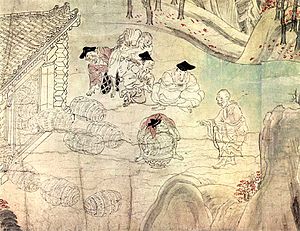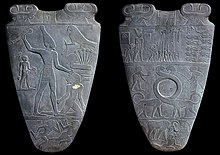



Narrative art is art that tells a story, either as a moment in an ongoing story or as a sequence of events unfolding over time. Some of the earliest evidence of human art suggests that people told stories with pictures. Although there are some common features to all narrative art, different cultures have developed idiosyncratic ways to discern narrative action from pictures.
Prior to the advent of literacy most narrative art was done in a simultaneous narrative style with very little overarching organization. Once literacy developed in different parts of the world pictures began to be organized along register lines, like lines on a page, that helped define the direction of the narrative. This method of linking scenes together led to other ways of telling stories in the 20th century, namely the newspaper, comic strips and comic books.
In painting in traditional Western art since the Renaissance, the concept of history painting covers most narrative scenes.
